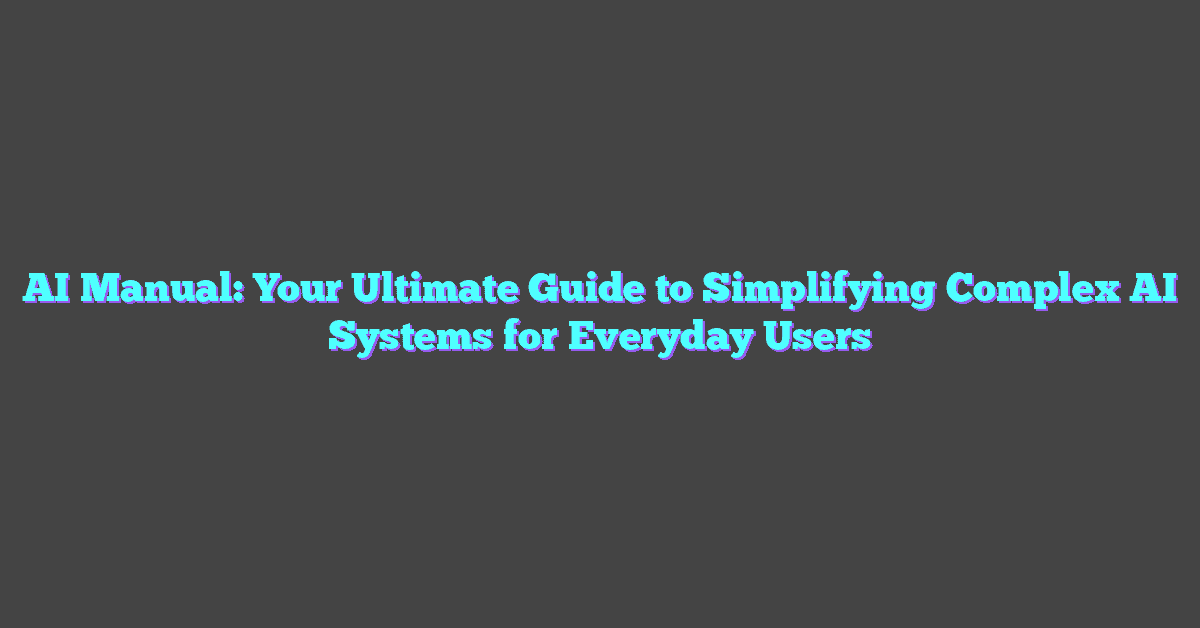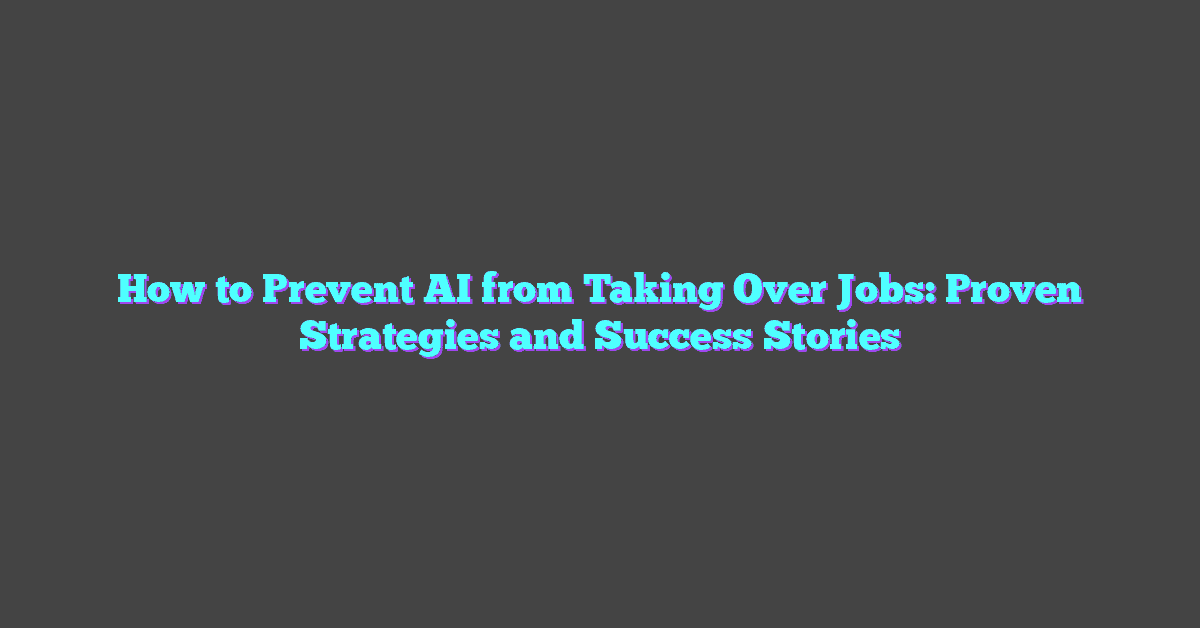Key Takeaways
- Enhance Creativity and Efficiency: AI automates repetitive tasks, allowing creators to focus on more innovative aspects of their work.
- Choose the Right Tools: Carefully evaluate AI tools for their capabilities and compatibility with existing workflows to maximize benefits.
- Balance Automation with Creative Control: Maintain your unique vision by setting clear boundaries for AI involvement in the creative process.
- Address Integration Challenges: Invest in skill development and manage workflow adjustments to ensure smooth AI adoption.
- Measure and Optimize Success: Use clear metrics and continuous feedback to assess AI integration and drive ongoing improvements.
In today’s fast-paced creative landscape, AI is becoming an invaluable ally. Artists, writers, and designers are discovering new ways to enhance their work with intelligent tools that streamline processes and spark innovation. Integrating AI into creative workflows isn’t about replacing human creativity but amplifying it.
Navigating the world of AI can seem daunting, but with the right approach, it can seamlessly fit into any creative project. From automating repetitive tasks to providing fresh inspiration, understanding best practices for AI integration ensures that technology serves as a creative partner, not a disruptor. Embracing these strategies allows creators to unlock new potentials, maintain their unique vision, and stay ahead in an ever-evolving digital world. With the right tools and mindset, integrating AI can transform the creative process for the better.
Understanding AI in Creative Workflows
Artificial intelligence (AI) transforms creative workflows by automating repetitive tasks, enhancing ideation, and enabling personalized content. Designers use AI tools like Adobe Sensei to streamline image editing and layout design, reducing project timelines by up to 30%. Writers leverage natural language processing (NLP) platforms such as OpenAI’s GPT models to generate content drafts, increasing productivity and allowing more focus on refining ideas.

Machine learning algorithms analyze user data to personalize creative outputs, ensuring content resonates with specific audiences. For example, marketers utilize AI-driven analytics to tailor campaigns based on consumer behavior patterns, improving engagement rates by 25%. Additionally, AI-powered collaboration tools facilitate real-time feedback and version control, enhancing team efficiency and creativity.
Integrating AI requires understanding its capabilities and limitations. Creative professionals adopt AI incrementally, starting with tools that complement their existing workflows. Training and continuous learning ensure effective utilization of AI technologies, fostering a harmonious balance between human creativity and machine intelligence.
Key Benefits of AI Integration
- Automation: Reduces time spent on manual tasks, allowing more focus on creative aspects.
- Enhanced Creativity: Provides new ideas and perspectives through data-driven insights.
- Personalization: Tailors content to individual preferences, increasing relevance and impact.
- Collaboration: Improves teamwork with intelligent tools for communication and project management.
Common AI Tools in Creative Industries
- Graphic Design: Adobe Sensei, Canva’s Magic Resize
- Content Creation: OpenAI GPT-4, Jasper AI
- Video Production: Runway ML, Descript
- Music Composition: AIVA, Amper Music
Challenges and Considerations
- Skill Development: Requires learning new technologies and adapting to changing workflows.
- Data Privacy: Ensures that user data used by AI tools complies with privacy regulations.
- Creative Control: Balances AI assistance with maintaining the creator’s unique vision.
- Cost: Evaluates the financial investment needed for AI tools against the benefits they provide.
Integrating AI into creative workflows empowers professionals to enhance their work, achieve higher efficiency, and explore innovative possibilities while preserving their creative integrity.
Selecting the Right AI Tools
Choosing the appropriate AI tools is crucial for enhancing your creative workflow. It ensures seamless integration and maximizes the benefits of artificial intelligence in your projects.
Assessing Tool Capabilities
Evaluate each AI tool’s features to match your creative needs. Identify specific functionalities like automated design generation, natural language processing, or data analytics. For instance, Adobe Sensei offers advanced image recognition, while OpenAI’s GPT-4 excels in content creation. Compare performance metrics, user interfaces, and customization options to determine which tools align with your objectives. Prioritize tools that provide scalability and support for continuous updates to stay ahead in the creative landscape.
Evaluating Integration Compatibility
Ensure AI tools integrate smoothly with your existing software and workflows. Check compatibility with platforms like Adobe Creative Suite, WordPress, or project management tools such as Trello and Asana. Assess API availability and support for data interchange formats like JSON or XML. For example, integrating OpenAI’s GPT-4 with a CMS can streamline content generation directly within your publishing platform. Verify that the tools support necessary plugins or extensions to facilitate seamless connectivity, reducing downtime and maintaining workflow efficiency.
Implementing AI in the Creative Process
AI transforms creative workflows by enhancing ideation and streamlining design and production. Integrating these technologies ensures efficiency and fosters innovation.
Enhancing Ideation and Brainstorming
AI-powered tools like OpenAI’s GPT-4 generate creative prompts and ideas, accelerating the brainstorming phase. They analyze current trends and audience preferences to suggest relevant concepts, boosting originality. Machine learning algorithms identify patterns in successful projects, guiding creators toward effective strategies. Additionally, collaborative platforms integrate AI to facilitate real-time idea generation and refinement, enabling teams to explore diverse perspectives quickly.
Streamlining Design and Production
Automation tools such as Adobe Sensei optimize design workflows by handling repetitive tasks like resizing images or applying filters. AI-driven project management platforms schedule tasks and allocate resources efficiently, reducing production time. Machine learning models assist in quality control by detecting inconsistencies, ensuring the final output meets high standards. Moreover, AI facilitates rapid prototyping by generating multiple design variations, allowing creators to iterate and finalize concepts swiftly.
Best Practices for AI and Human Collaboration
Integrating AI into creative workflows enhances productivity and innovation while preserving human creativity. Effective collaboration between AI and humans relies on strategic practices that balance automation with creative control and uphold ethical standards.
Balancing Automation and Creative Control
Maintaining creative autonomy is essential when automating tasks with AI. Designers and creators utilize AI to handle repetitive processes, such as resizing images or generating initial drafts, allowing them to focus on more complex and imaginative aspects of their work. By setting clear boundaries for AI involvement, professionals ensure that their unique vision remains central to the creative process. Implementing iterative feedback loops between AI tools and human input fosters a harmonious workflow where automation supports rather than replaces creative decision-making.
Ensuring Ethical Use of AI
Ethical considerations are crucial in the integration of AI into creative workflows. Professionals must prioritize data privacy by using AI tools that comply with relevant regulations and safeguard sensitive information. Additionally, avoiding biases in AI-generated content ensures fair and inclusive outcomes. Transparency in how AI tools operate and make decisions builds trust between creators and their audiences. Establishing guidelines for responsible AI usage helps maintain ethical standards, ensuring that AI serves as a positive force in the creative landscape.
Overcoming Challenges in AI Integration
Integrating AI into creative workflows presents several obstacles. Addressing these challenges ensures seamless adoption and maximizes AI’s benefits.
Addressing Skill Gaps
Bridging skill gaps is essential for effective AI integration. Professionals need training in AI tools and data analysis to leverage technology fully. Implementing regular workshops and providing access to online courses can enhance team proficiency. Collaborating with AI specialists facilitates knowledge transfer and accelerates learning curves.
Managing Workflow Adjustments
Adjusting workflows accommodates AI’s role in creative processes. Redefining task responsibilities optimizes collaboration between humans and AI. Establishing clear protocols for AI tool usage ensures consistency and efficiency. Monitoring workflow changes allows for continuous improvement and adaptation to evolving technologies.
Measuring Success and Optimizing AI Integration
Defining Success Metrics
Evaluating AI integration involves identifying key performance indicators (KPIs) such as:
- Productivity Increase: Measure the number of projects completed before and after AI implementation.
- Quality of Output: Assess improvements in creativity and precision of the work produced.
- Time Saved: Track reductions in time spent on repetitive tasks through AI automation.
- Cost Efficiency: Analyze changes in budget allocations resulting from AI tool usage.
Data Collection and Analysis
Implement effective data collection methods to monitor AI performance:
- Analytics Tools: Utilize platforms like Google Analytics or built-in AI tool metrics to gather data.
- Performance Dashboards: Use dashboards to visualize real-time data on AI contributions to workflows.
Feedback Mechanisms
Gather comprehensive feedback to assess AI integration:
- Team Feedback: Conduct regular surveys to understand user experiences and identify areas for improvement.
- Client Feedback: Collect client opinions on the quality and efficiency of deliverables influenced by AI tools.
Continuous Optimization Strategies
Refine AI integration through ongoing optimization processes:
- Regular Reviews: Schedule periodic evaluations of AI tool performance against established KPIs.
- Training Updates: Provide continuous training to ensure team members stay updated with AI advancements.
- Tool Adjustments: Modify AI settings or switch tools based on performance data and feedback to enhance effectiveness.
Success Metrics
| Metric | Description | Measurement Method |
|---|---|---|
| Productivity Increase | Number of projects completed | Compare project counts pre and post-AI |
| Quality of Output | Creativity and precision of work | Quality assessments and reviews |
| Time Saved | Reduction in time spent on tasks | Time tracking software |
| Cost Efficiency | Changes in budget allocations | Financial reports |
Optimizing AI Integration
Ensure continuous improvement by:
- Monitoring Performance: Regularly track AI metrics to identify trends and anomalies.
- Adjusting Processes: Adapt workflows based on data insights to maximize AI benefits.
- Engaging in Training: Encourage ongoing education to leverage new AI features and capabilities effectively.
By systematically measuring success and optimizing AI integration, creative workflows can remain efficient, innovative, and aligned with project goals.
Conclusion
Integrating AI into creative workflows opens up exciting possibilities for artists and professionals alike. By embracing the right tools and approaches creators can enhance their productivity and unlock new levels of creativity. The balance between human intuition and AI assistance ensures that unique visions remain at the forefront. As technology continues to evolve staying adaptable and committed to learning will keep creative professionals ahead. Embracing AI as a collaborative partner rather than a replacement fosters a dynamic and innovative environment where creativity truly thrives.




